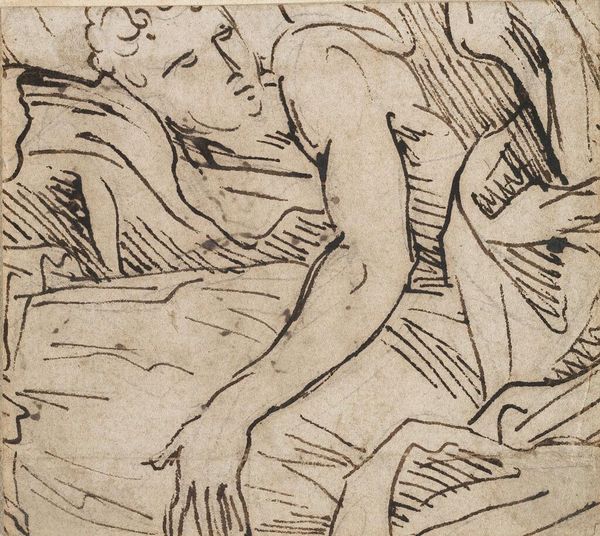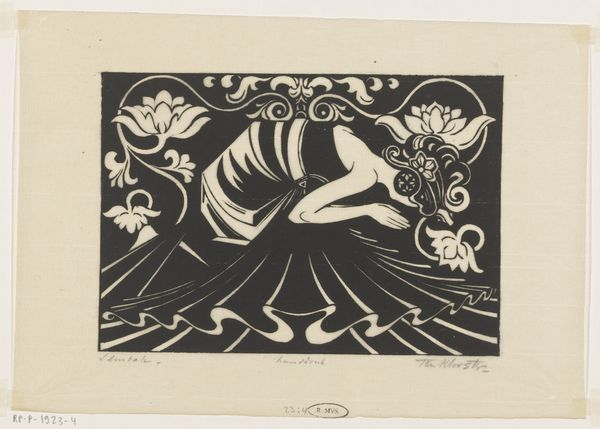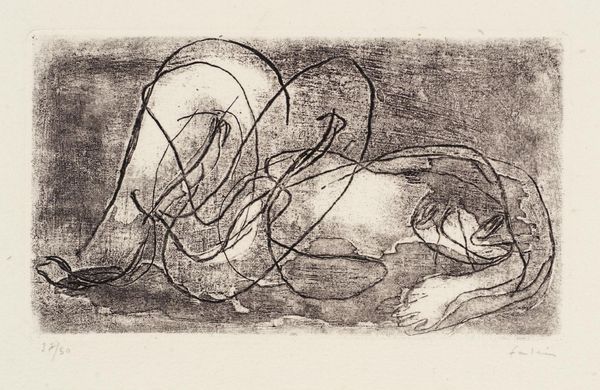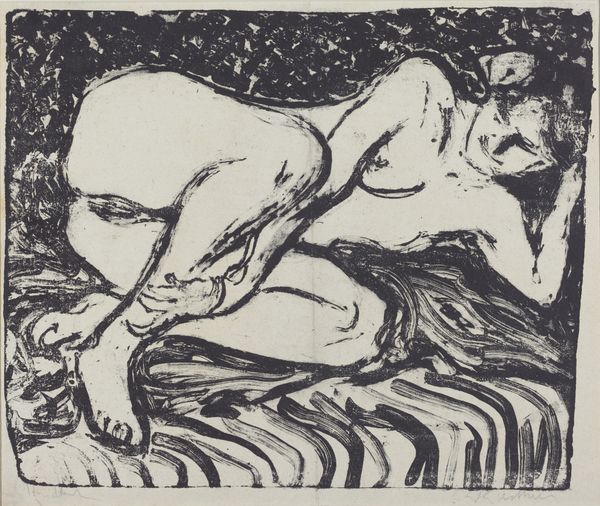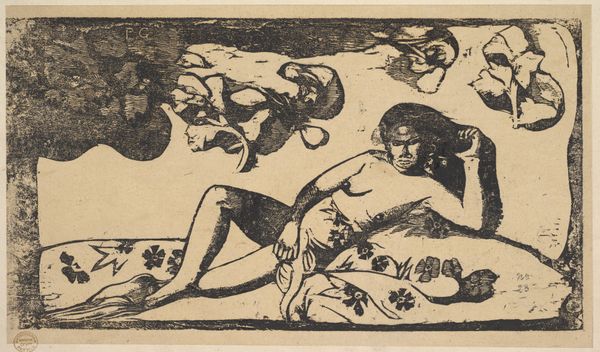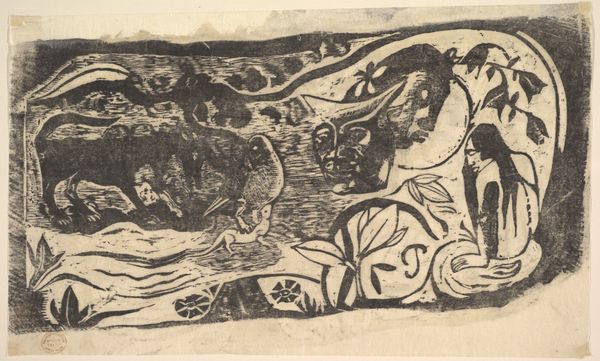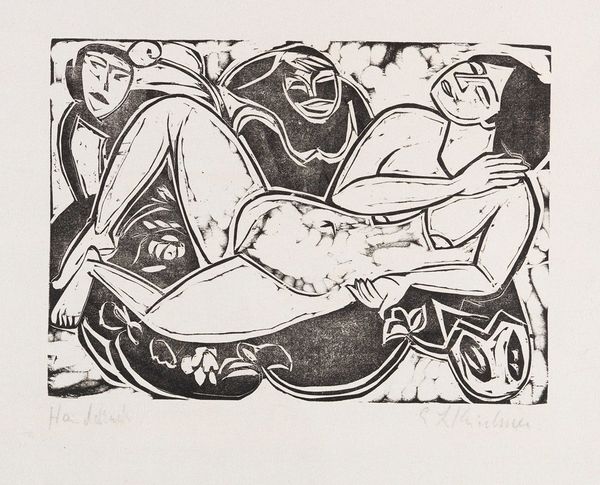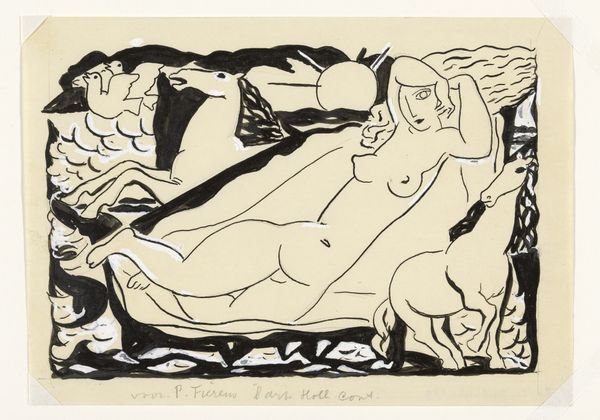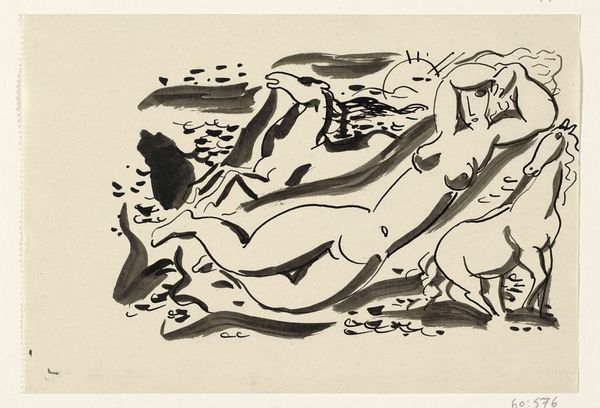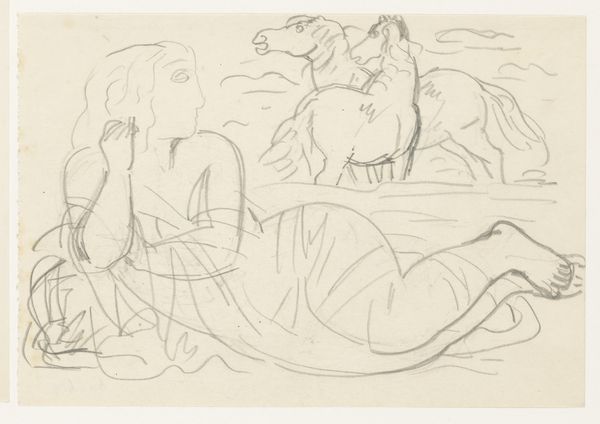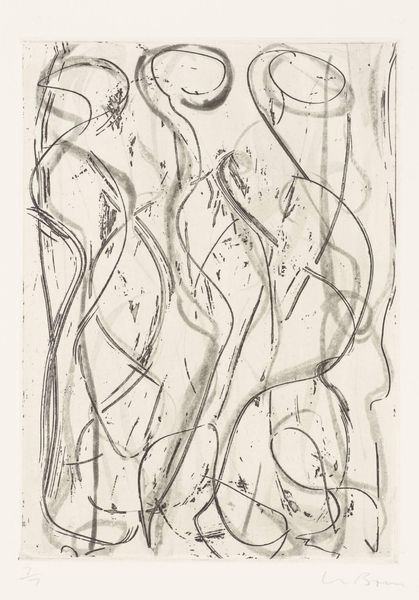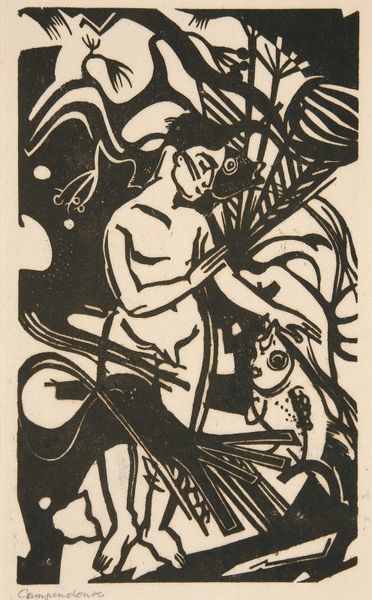
drawing, ink, pencil
#
drawing
#
ink painting
#
pen sketch
#
landscape
#
figuration
#
ink
#
pencil
#
line
#
symbolism
#
nude
#
watercolor
Dimensions: height 110 mm, width 208 mm
Copyright: Rijks Museum: Open Domain
Curator: This is "Klokkenklanken aan de zee" (roughly translated, "Bell Sounds at Sea"), a work created between 1868 and 1928 by Jan Toorop. The Rijksmuseum holds this evocative drawing, rendered in ink and pencil. Editor: My initial impression is of a dreamlike seascape, almost spectral. The monochromatic palette lends it a haunting quality, and the composition feels dynamic despite its stillness. Curator: Absolutely. Toorop was deeply involved with symbolism at this stage, and the recurring motifs here bear closer examination. Note how the stylized waves, the floating female figure, and the suggestion of bells hint at deeper narratives around femininity, nature, and perhaps even societal anxieties of the time. Editor: I'm drawn to the nude figure—is she reclining or is she caught in the waves? Her ambiguous position feels significant. This was a period where female sexuality was both hyper-visible and intensely policed, and Toorop seems to be engaging with that tension through a symbolic lens. The stars in the background, and that somewhat unusual bell shape only strengthen the odd symbolic quality of this picture. Curator: Indeed. Her languid posture could symbolize both freedom and vulnerability. Consider the influence of literary symbolism, the growing prevalence of occult movements, and Toorop’s exposure to various cultural ideas, all forming the historical background. The sea, after all, has often been interpreted in art as an arena for societal transgressions and transformative experience. Editor: That makes sense. And knowing that, it's fascinating how Toorop uses these relatively simple materials—ink and pencil—to create such a complex emotional landscape. The stark lines and minimal shading force the viewer to engage actively in interpreting the symbolism. Also, knowing the period it was made in, it may represent a need for expression and emotion at the beginning of the first world war. Curator: Precisely. Toorop used conventional drawing techniques, but he wasn't constrained by any set formula or by any academy. He let his pen run as a true symbolist to create a great piece. Editor: A very good point, which goes to show how it invites re-interpretation as a way of questioning these rigid frameworks of conventional society. Overall a captivating conversation piece, which, from my viewpoint, acts as an invitation for reflection on individual freedom and its connection to society and gender during moments of socio-political change.
Comments
No comments
Be the first to comment and join the conversation on the ultimate creative platform.
